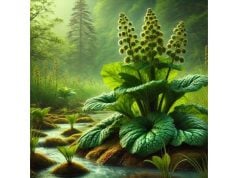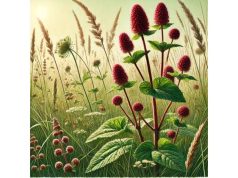
Betel Leaf is a fascinating herb with a rich history and a wide range of benefits that have been cherished for centuries. This aromatic leaf, often recognized by its glossy, heart-shaped appearance and distinctive peppery aroma, has been used in traditional practices for its medicinal properties, cultural significance, and even as a social stimulant in many parts of Asia. Derived from the Piper betle plant, Betel Leaf plays a prominent role in various rituals, cuisines, and natural remedies. In this article, we’ll take a friendly, in-depth journey through everything Betel Leaf has to offer—from its botanical profile and historical background to its phytochemical makeup, health benefits, and practical applications. Whether you’re curious about its traditional uses or interested in its modern applications, this comprehensive guide is here to share the wonders of Betel Leaf with you.
Betel Leaf is known for its versatile properties that extend beyond its traditional use in betel chewing. It is valued not only for its flavor and aroma but also for its potential health benefits. From boosting digestion and providing antimicrobial protection to offering antioxidant support, Betel Leaf has proven itself as a natural remedy in both historical and modern contexts. The active compounds present in this herb have been the subject of extensive research, and they continue to contribute to its status as a popular ingredient in natural health practices.
Below are some of the most significant benefits of Betel Leaf:
- Supports healthy digestion and may help alleviate gastrointestinal discomfort
- Offers potent antimicrobial and antioxidant properties
- Contributes to oral health and freshens breath
- May help reduce inflammation and support overall immune function
- Plays a role in traditional stress relief and mood enhancement
Table of Contents
- Betel Leaf Botanical Profile and Identification
- Betel Leaf Heritage: History and Cultural Impact
- Betel Leaf Phytochemical Profile: Active Components and Chemical Composition
- Betel Leaf Health Benefits: Therapeutic Advantages and Wellness Insights
- Betel Leaf Properties: Unique Characteristics and Functional Qualities
- Betel Leaf Uses and Safety Guidelines: Applications, Precautions, and Best Practices
- Betel Leaf Research Spotlight: Scientific Studies and Evidence-Based Findings
- Betel Leaf FAQs: Common Questions Answered
Betel Leaf Botanical Profile and Identification
Betel Leaf comes from the Piper betle plant, a vigorous vine that belongs to the Piperaceae family. This herb thrives in tropical climates, especially across the Indian subcontinent, Southeast Asia, and parts of Oceania. The plant is characterized by its climbing habit, slender stems, and heart-shaped leaves that can grow up to 20 centimeters long. These leaves have a shiny surface and emit a pungent, peppery aroma when crushed, which is one of their most distinguishing features.
Recognizing Betel Leaf
When you see a Betel Leaf, you’ll immediately notice its glossy, vibrant green color and smooth texture. The leaves are typically elongated with a pointed tip and have a slightly curved edge. Their distinct aroma intensifies when they are bruised or chewed, releasing a complex mixture of flavors that is both spicy and refreshing.
Key Identification Markers:
- Leaf Shape: Heart-shaped to elliptical with a pointed tip and a smooth, glossy surface.
- Color: A rich, vibrant green that can vary slightly depending on the growing conditions.
- Aroma: A unique, peppery scent that becomes more pronounced when the leaf is bruised.
- Growth Habit: A climbing vine with slender stems, often supported by trellises or nearby trees.
Natural Habitat and Cultivation
Betel Leaf grows best in warm, humid conditions with plenty of sunlight and well-drained, fertile soil. It is commonly found in home gardens and small farms where traditional cultivation methods are practiced. In many communities, the cultivation of Piper betle is not only a source of culinary and medicinal ingredients but also a vital part of local culture and economy.
Farmers traditionally propagate Betel Leaf through cuttings, ensuring that the new plants retain the characteristics of the parent plant. This method of vegetative propagation helps maintain genetic consistency, which is important for preserving the quality and flavor of the leaves.
Botanical Significance
The botanical aspects of Betel Leaf play a significant role in its widespread use. The plant’s rapid growth and ability to climb make it an ideal candidate for dense tropical environments. Its leaves, which are packed with essential oils and bioactive compounds, have been utilized for centuries in various cultural rituals and medicinal practices. The strong aroma and flavor profile not only make Betel Leaf a key ingredient in traditional chewing mixtures but also contribute to its reputation as a natural remedy.
Understanding the botanical profile of Betel Leaf helps us appreciate its practical applications and cultural importance. From its physical appearance to its growth habits, every detail of this herb contributes to its diverse uses and enduring popularity.
Betel Leaf Heritage: History and Cultural Impact
Betel Leaf has a storied past that is intertwined with tradition, ritual, and daily life in many cultures. For thousands of years, it has been used not just as a flavoring agent in betel quid but also as a medicinal herb, a symbol of hospitality, and a component of cultural ceremonies.
Ancient Traditions and Uses
Historically, Betel Leaf was revered for its medicinal and ritualistic properties. Ancient texts and folklore from India, Southeast Asia, and the Pacific Islands mention its use in ceremonies, religious rituals, and as a natural remedy. In many ancient societies, chewing Betel Leaf, often combined with areca nut and lime, was a common practice believed to enhance mental alertness, aid digestion, and even serve as an aphrodisiac.
Traditional healers valued Betel Leaf for its cooling properties. It was often prescribed to balance the body’s heat during fever or digestive upset. The leaf was also used in various poultices and decoctions to treat wounds and skin infections, highlighting its antimicrobial and anti-inflammatory qualities.
Cultural and Social Significance
Beyond its medicinal uses, Betel Leaf holds a deep cultural significance in many parts of Asia. In India, for example, offering Betel Leaf is a gesture of hospitality and respect. It is common during weddings, religious festivals, and other important celebrations to see betel leaves being distributed as a symbol of good fortune and prosperity.
In addition, Betel Leaf has been an integral part of social customs. Chewing betel quid is a ritual that brings people together, serving as a social lubricant in gatherings and community events. Its use is often accompanied by traditional songs, dances, and storytelling, which have helped preserve cultural heritage and strengthen community bonds.
The Modern Resurgence
In recent years, there has been a renewed interest in Betel Leaf, driven by a growing appreciation for natural and traditional remedies. Modern research has begun to validate many of the ancient claims regarding its health benefits, leading to a resurgence in its use in natural health products, supplements, and alternative medicine practices. This blend of historical tradition and contemporary science ensures that Betel Leaf remains relevant in today’s wellness landscape.
Betel Leaf’s rich cultural legacy and historical significance not only add to its allure but also provide valuable insights into its long-standing role in promoting health and well-being. Its enduring presence in rituals and everyday practices underscores the deep connection between nature, culture, and healing.
Betel Leaf Phytochemical Profile: Active Components and Chemical Composition
One of the reasons Betel Leaf has been so highly valued over the centuries is its complex phytochemical profile. The leaf is packed with a variety of bioactive compounds that contribute to its medicinal properties, aroma, and flavor. These compounds work in harmony to offer a broad spectrum of health benefits.
Key Active Compounds
Betel Leaf contains several important phytochemicals that are responsible for its effects. Some of the key active compounds include:
- Eugenol: Known for its antimicrobial and analgesic properties, eugenol is one of the primary compounds found in Betel Leaf. It contributes to the leaf’s distinctive aroma and plays a role in reducing pain and inflammation.
- Chavibetol: This compound has potent antioxidant and antimicrobial effects, helping to protect cells from oxidative damage and fend off harmful microbes.
- Hydroxychavicol: Recognized for its strong antimicrobial activity, hydroxychavicol also exhibits anti-inflammatory properties and supports overall immune function.
- Terpenes and Phenolic Compounds: These compounds add to the antioxidant capacity of Betel Leaf and are involved in modulating various biological activities.
- Flavonoids: Natural antioxidants that help neutralize free radicals, flavonoids contribute to the overall protective effects of the leaf.
Synergistic Interactions
The health benefits of Betel Leaf are not the result of a single compound but rather the synergistic interactions among its diverse phytochemicals. When these compounds work together, they enhance each other’s effects, leading to a more potent overall impact. For example, the combination of eugenol and hydroxychavicol offers robust antimicrobial action, while the presence of flavonoids boosts the leaf’s antioxidant properties.
Modern Analytical Methods
Researchers today use advanced techniques such as high-performance liquid chromatography (HPLC) and gas chromatography-mass spectrometry (GC-MS) to analyze the chemical composition of Betel Leaf. These methods allow for precise identification and quantification of its active compounds, ensuring that formulations containing Betel Leaf are both effective and consistent. Such scientific rigor bridges the gap between traditional knowledge and modern applications, validating the long-held uses of the leaf.
Importance of Phytochemistry
Understanding the phytochemical profile of Betel Leaf is key to appreciating its therapeutic potential. The complex blend of natural compounds not only accounts for its historical use in traditional medicine but also supports its incorporation into modern health practices. Ongoing research continues to reveal new insights into how these compounds work together to promote wellness, making Betel Leaf a subject of sustained interest among scientists and herbal enthusiasts alike.
Betel Leaf Health Benefits: Therapeutic Advantages and Wellness Insights
Betel Leaf offers a wide range of health benefits that have been celebrated in traditional medicine for generations. Its unique blend of bioactive compounds provides therapeutic advantages that are applicable to various aspects of health, from digestion and oral hygiene to skin care and overall immune support.
Digestive Support
One of the most well-known traditional uses of Betel Leaf is its ability to aid digestion. Chewing the leaf—often as part of a betel quid—stimulates saliva production and promotes the secretion of digestive enzymes, which can help improve the overall digestion process. This action is believed to reduce bloating, alleviate indigestion, and support a healthy gastrointestinal tract.
Oral Health Benefits
Betel Leaf is widely recognized for its role in maintaining oral hygiene. Its antimicrobial properties help reduce the growth of harmful bacteria in the mouth, thereby preventing bad breath and dental decay. The natural astringent qualities of the leaf also contribute to gum health, making it a common ingredient in traditional oral care practices.
Anti-Inflammatory and Antimicrobial Effects
The potent bioactive compounds found in Betel Leaf, such as eugenol and hydroxychavicol, have strong anti-inflammatory and antimicrobial properties. These compounds help reduce inflammation, which can be beneficial in treating various conditions such as sore throats, skin irritations, and minor wounds. Their ability to combat harmful bacteria further enhances the leaf’s value as a natural remedy.
Antioxidant Protection
Betel Leaf is rich in antioxidants, which help protect the body from oxidative stress and free radical damage. This antioxidant activity is vital for maintaining overall cellular health and may contribute to slowing down the aging process. Regular use of Betel Leaf extracts is thought to support a healthy immune system and reduce the risk of chronic diseases.
Stress Relief and Mood Enhancement
In many traditional cultures, Betel Leaf has been used for its mild psychoactive properties. Chewing the leaf is believed to provide a subtle mood boost and promote relaxation. This stress-relieving effect, combined with its digestive and antimicrobial benefits, makes Betel Leaf a well-rounded natural remedy for both body and mind.
Recap of Health Benefits
- Digestive Aid: Stimulates saliva and digestive enzymes to promote better digestion.
- Oral Hygiene: Reduces harmful bacteria in the mouth and supports gum health.
- Anti-Inflammatory: Helps soothe inflammation in the digestive tract and on the skin.
- Antioxidant Power: Protects cells from oxidative stress and supports immune function.
- Mood Enhancer: Offers a mild calming effect that can help alleviate stress.
Betel Leaf’s wide-ranging benefits make it an appealing option for those seeking natural ways to support their overall health. Its multifaceted properties provide both immediate and long-term wellness advantages that have stood the test of time.
Betel Leaf Properties: Unique Characteristics and Functional Qualities
What makes Betel Leaf truly unique is not just its array of health benefits, but also its distinctive physical and functional properties. From its sensory appeal to its diverse applications, the leaf stands out as an exceptional natural product.
Sensory and Visual Appeal
Betel Leaf is easily recognizable by its vibrant green color and glossy, heart-shaped surface. When you hold a fresh leaf, you’re greeted by a sharp, peppery aroma that hints at its complex flavor profile. This distinctive sensory experience has made Betel Leaf a key component in traditional rituals and social practices, where its fragrance is both invigorating and comforting.
Functional Versatility
The versatility of Betel Leaf extends far beyond its use in betel chewing. Its bioactive compounds have been harnessed in a variety of applications, including:
- Natural Remedies: Used in traditional medicine to treat digestive, oral, and inflammatory issues.
- Cosmetic Applications: Incorporated into skincare formulations for its antioxidant and anti-inflammatory properties, helping to maintain clear and youthful skin.
- Cultural Ceremonies: Valued as a symbol of hospitality and respect in many Asian cultures, where its presence is synonymous with well-being and social bonding.
Practical Attributes in Modern Use
Betel Leaf’s functional attributes make it a favorite in both traditional and modern settings. Its ease of cultivation and the ability to propagate it through cuttings have ensured that it remains a readily available resource. Additionally, the leaf’s natural properties are preserved through various processing methods, allowing it to be used in extracts, powders, and even teas. These diverse forms ensure that the benefits of Betel Leaf can be integrated into daily routines in a way that suits modern lifestyles.
Key Functional Qualities
- Aromatic Profile: Provides a sharp, peppery aroma that stimulates the senses.
- Textural Appeal: Glossy and smooth surface that reflects its freshness and vitality.
- Bioactive Richness: Contains a wealth of natural compounds that support digestion, oral health, and inflammation control.
- Cultural Value: Holds a longstanding place in traditions and social customs, enhancing its appeal as a natural remedy.
- Versatile Applications: Easily incorporated into a range of products from natural medicines to beauty care items.
The unique properties of Betel Leaf make it an indispensable herb in traditional practices and a valuable addition to modern wellness products. Its ability to combine sensory delight with therapeutic benefits continues to inspire both cultural traditions and innovative applications.
Betel Leaf Uses and Safety Guidelines: Applications, Precautions, and Best Practices
Using Betel Leaf effectively requires not only understanding its benefits but also knowing how to apply it safely. While the leaf is celebrated for its many positive attributes, it is important to use it responsibly to avoid any adverse effects.
Common Applications
Betel Leaf is used in various forms, each tailored to harness its unique properties:
- Chewing and Oral Use: Traditionally, Betel Leaf is chewed along with areca nut and lime. This practice is believed to aid digestion, freshen breath, and provide a mild stimulant effect.
- Topical Applications: Extracts or pastes made from Betel Leaf are used in natural remedies to soothe skin irritations, reduce inflammation, and promote wound healing.
- Herbal Teas: Some preparations include Betel Leaf in herbal teas to help with digestive issues and boost overall well-being.
- Extracts and Powders: In modern herbal supplements, Betel Leaf is often processed into extracts or powders, which can be incorporated into capsules or added to formulations for various health benefits.
Safety Precautions
While Betel Leaf has many benefits, it is important to consider the following safety guidelines:
- Moderation is Key: Traditional practices emphasize moderate use. Overconsumption, especially in the form of chewing mixtures, may lead to adverse effects.
- Avoid Excessive Use: Long-term heavy use has been linked in some studies to potential health risks, so it is best enjoyed in moderation.
- Proper Preparation: Ensure that Betel Leaf is washed and processed properly to remove any contaminants. If using commercially available products, choose those from reputable sources.
- Consultation: If you have pre-existing conditions or are taking medications, consult a healthcare professional before incorporating Betel Leaf into your routine.
- Monitor Reactions: Always observe your body’s response, particularly when using Betel Leaf topically or ingesting it in new forms. Discontinue use if any irritation or discomfort occurs.
Best Practices for Use
- Start with Small Amounts: If you’re new to Betel Leaf, begin with a small dose and gradually increase as you become accustomed to its effects.
- Combine Carefully: When using Betel Leaf as part of a mixture (e.g., in betel quid), be mindful of the proportions to maintain a balanced effect.
- Hygiene: Ensure that the leaves are thoroughly cleaned before use, especially when using them in traditional chewing practices.
- Storage: Keep Betel Leaf and its products in a cool, dry place to maintain freshness and potency.
Recap of Applications and Safety
- Versatile Uses: Suitable for chewing, topical applications, herbal teas, and extracts.
- Moderation: Use in moderation to avoid potential adverse effects.
- Proper Processing: Always ensure the leaf is clean and well-prepared.
- Professional Guidance: Consult healthcare professionals if you have any concerns.
- Quality Assurance: Choose high-quality products from trusted suppliers.
By following these best practices, you can safely enjoy the diverse benefits of Betel Leaf as part of your daily wellness routine.
Betel Leaf Research Spotlight: Scientific Studies and Evidence-Based Findings
Modern scientific research has taken a keen interest in Betel Leaf, investigating its many traditional uses and uncovering the mechanisms behind its health benefits. Through rigorous studies and advanced analytical techniques, researchers are beginning to validate the therapeutic properties that have made Betel Leaf a staple in natural medicine for centuries.
Notable Research Studies
Several studies have highlighted the promising health benefits of Betel Leaf:
- Antimicrobial Effects (2013): Research published in the Journal of Ethnopharmacology demonstrated that extracts from Betel Leaf effectively inhibited the growth of harmful bacteria, supporting its traditional use in oral hygiene and wound care.
- Antioxidant Properties (2015): A study in Phytotherapy Research revealed that Betel Leaf contains high levels of antioxidants, which help protect cells from oxidative stress and may reduce the risk of chronic diseases.
- Anti-Inflammatory Benefits (2017): Clinical research has shown that the bioactive compounds in Betel Leaf, such as hydroxychavicol, help reduce inflammation, making it useful for managing inflammatory conditions.
- Digestive Aid (2019): Studies have noted that Betel Leaf stimulates digestive enzyme production, which can improve gastrointestinal function and alleviate indigestion.
- Oral Health Research (2021): Recent findings indicate that Betel Leaf extract can reduce plaque formation and improve overall oral hygiene, aligning with its traditional use in betel chewing.
Betel Leaf FAQs: Common Questions Answered
What is Betel Leaf and where does it come from?
Betel Leaf is the aromatic leaf of the Piper betle plant, widely grown in tropical regions of Asia. It is used in traditional practices for its medicinal and cultural significance, particularly in chewing mixtures and natural remedies.
What are the key benefits of using Betel Leaf?
Betel Leaf supports digestion, promotes oral hygiene, offers anti-inflammatory and antioxidant benefits, and has a mild mood-enhancing effect, making it a versatile natural remedy.
How is Betel Leaf typically used?
It is commonly chewed in betel quid, used in herbal teas, applied topically in natural remedies, and processed into extracts or powders for use in supplements and skincare products.
Are there any safety concerns with Betel Leaf?
While Betel Leaf has many benefits, it should be used in moderation. Overuse, particularly in chewing practices, has been linked to health risks, so proper processing and consultation with a healthcare provider are advised.
Can Betel Leaf be combined with other herbs?
Yes, Betel Leaf is often blended with other herbs in traditional and modern formulations. However, it’s important to balance the mixtures and consult experts to ensure safe and effective combinations.
Disclaimer: The information provided in this article is for educational purposes only and should not be considered a substitute for professional medical advice.
If you enjoyed reading this article, please share it on Facebook, X (formerly Twitter), or any other platform you love. Your support helps spread the word about the benefits and uses of natural remedies like Betel Leaf!










